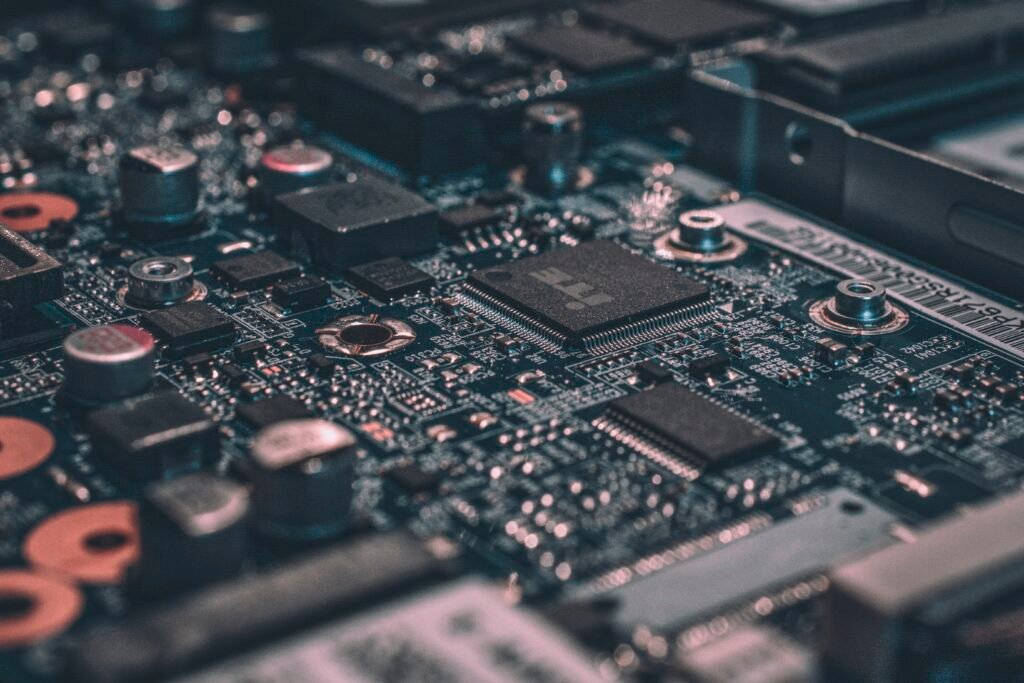Imagine being able to take your performance to the next level with state-of-the-art equipment and machines. By incorporating cutting-edge technology into your routine, you can unlock new possibilities and achieve unprecedented results. Whether it’s in sports, fitness, or even the workplace, the right tools can make all the difference. In this article, we’ll explore how state-of-the-art equipment can enhance your performance, allowing you to reach new heights and push the boundaries of what you thought was possible.

This image is property of images.unsplash.com.
Improving Efficiency
In today’s fast-paced world, efficiency is key to success. With the advancement in technology, state-of-the-art equipment and machines have become a game-changer for businesses across various industries. These cutting-edge tools offer numerous benefits that can greatly enhance productivity and streamline operations. Four major factors contribute to improving efficiency: faster processing capabilities, optimized workflow, automated tasks, and reduced downtime.
Faster processing capabilities
State-of-the-art equipment is designed to handle complex tasks at lightning speed. From high-speed computers to powerful processing units, these machines can quickly analyze vast amounts of data and perform calculations with precision. This enables businesses to accelerate their operations, making processes more efficient and reducing the overall time required to complete tasks.
Optimized workflow
Efficient workflow is essential for any organization, and state-of-the-art equipment facilitates just that. These advanced machines are equipped with features that optimize the sequence of tasks, eliminating bottlenecks and reducing unnecessary steps. By streamlining the workflow, employees can focus on core activities, maximizing productivity and minimizing wasted time and resources.
Automated tasks
State-of-the-art equipment often comes with automation capabilities, reducing the need for manual intervention in repetitive tasks. This not only saves time but also minimizes the risk of errors. Automated tasks allow employees to focus on more critical and creative aspects of their work, driving innovation and improving overall efficiency.
Reduced downtime
Downtime can be a significant setback for any organization. State-of-the-art equipment is built to minimize downtime through improved reliability and robustness. Advanced sensors and predictive maintenance algorithms help identify potential issues before they cause major breakdowns. This proactive approach to maintenance ensures that machines are operational for longer periods, contributing to enhanced efficiency and uninterrupted workflow.
Enhanced Precision and Accuracy
Precision and accuracy are indispensable in various industries, ranging from manufacturing to healthcare. State-of-the-art equipment offers several features that ensure high levels of precision and accuracy in operations. Four key factors contribute to this enhancement: advanced sensors and measurement tools, high-resolution imaging systems, improved calibration techniques, and accurate data collection.
Advanced sensors and measurement tools
State-of-the-art equipment is equipped with advanced sensors and measurement tools that enable precise and accurate readings. These sensors can detect even the slightest variations and capture data with an unparalleled level of detail. Whether it’s temperature, pressure, or any other critical parameter, these sensors ensure that measurements are reliable and consistent, allowing businesses to make informed decisions based on accurate data.
High-resolution imaging systems
In industries such as healthcare and manufacturing, imaging systems play a crucial role in diagnostics, analysis, and quality control. State-of-the-art machines incorporate high-resolution imaging systems that capture images with unprecedented clarity and detail. This allows professionals to observe and analyze objects or processes at a microscopic level, leading to accurate evaluations and informed decision-making.
Improved calibration techniques
Calibration is vital to ensure accurate measurements and maintain the integrity of data. State-of-the-art equipment leverages improved calibration techniques that minimize errors and uncertainties. These techniques calibrate instruments for accuracy across a wide range of settings, ensuring consistent and reliable results. Enhanced calibration techniques contribute to precision in measurements, making state-of-the-art equipment highly desirable for industries requiring rigorous accuracy.
Accurate data collection
Accurate data collection is essential for organizations to make data-driven decisions and gain valuable insights into their operations. State-of-the-art equipment employs intelligent algorithms and advanced data-gathering techniques to ensure accurate and reliable data collection. This includes real-time monitoring, automated data recording, and data synchronization across different systems. Accurate data collection helps businesses identify trends, detect anomalies, and analyze performance, contributing to better decision-making and improved outcomes.

This image is property of images.unsplash.com.
Increased Safety Measures
Safety should always be a top priority in any industry. State-of-the-art equipment incorporates various safety measures to protect both employees and assets. Four key safety measures offered by advanced equipment are emergency shutdown mechanisms, safety interlocks and alarms, personal protective equipment (PPE), and real-time monitoring systems.
Emergency shutdown mechanisms
In critical situations, emergency shutdown mechanisms are crucial for preventing accidents or equipment damage. State-of-the-art equipment is equipped with advanced emergency shutdown mechanisms that can be activated instantly in response to certain conditions or events. These mechanisms provide quick and effective response, minimizing the likelihood of catastrophic incidents and ensuring the safety of personnel.
Safety interlocks and alarms
State-of-the-art equipment features safety interlocks and alarms that act as additional layers of protection. Interlocks ensure that certain conditions are met before equipment can be operated, preventing unsafe operations and potential accidents. Alarms provide timely warnings about hazardous situations such as high temperatures, low pressure, or any other critical parameter exceeding safe limits. Safety interlocks and alarms help create a safe working environment by alerting personnel to potential risks and preventing accidents.
Personal protective equipment
Personal protective equipment (PPE) is essential for safeguarding employees from potential hazards. State-of-the-art equipment emphasizes PPE, providing employees with high-quality protective gear designed to offer optimal safety. Whether it’s gloves, goggles, helmets, or specialized suits, this equipment ensures that workers are protected from potential risks associated with their tasks.
Real-time monitoring systems
Real-time monitoring systems play a crucial role in maintaining a safe working environment. State-of-the-art equipment is equipped with advanced sensors and monitoring tools that continuously track various parameters and can alert personnel in real-time if any abnormal conditions are detected. Real-time monitoring systems enable proactive action to be taken, preventing accidents and ensuring the safety of employees and equipment.
Streamlined User Interface
A user-friendly interface greatly impacts the efficiency and usability of equipment. State-of-the-art machines come with streamlined user interfaces that enhance the overall user experience. Four key features contribute to a streamlined user interface: intuitive controls, user-friendly dashboards, customizable settings, and real-time performance feedback.
Intuitive controls
State-of-the-art equipment incorporates intuitive controls that are easy to understand and operate. These controls are designed with the user in mind, minimizing the learning curve and allowing users to operate the equipment efficiently. Intuitive controls result in fewer errors and increase the speed at which tasks can be completed, improving overall productivity.
User-friendly dashboards
User-friendly dashboards provide a consolidated view of essential information and parameters. State-of-the-art equipment comes with well-designed dashboards that display critical data in a clear and organized manner. Users can quickly access information, monitor real-time performance, and make informed decisions based on the data presented. User-friendly dashboards enable users to navigate the equipment effortlessly and optimize their workflows.
Customizable settings
State-of-the-art equipment recognizes the diverse needs of users and allows customization of settings to suit individual preferences. Whether it’s adjusting display settings, programming shortcuts, or creating personalized profiles, the equipment offers flexibility to tailor the user experience. Customizable settings empower users to optimize their workflow and maximize efficiency by adapting the equipment to their specific requirements.
Real-time performance feedback
Real-time performance feedback is essential for users to monitor and adjust their operations effectively. State-of-the-art equipment provides real-time performance feedback through visual indicators, alerts, or notifications. This feedback allows users to track the status and performance of the equipment in real-time, enabling them to identify any issues promptly and take necessary actions for optimized efficiency.

This image is property of images.unsplash.com.
